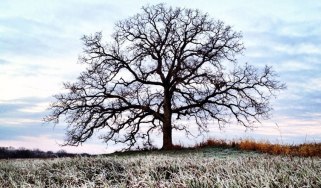These remarks were delivered at a #ShowUpForShabbat service at Kol Hadash Humanistic Congregation (held in cooperation with the North Shore Unitarian Church) on November 2, 2018 in the aftermath of the Pittsburgh synagogue shooting.
The Tree of Life synagogue in Pittsburgh contains multitudes. Tree of Life was founded in 1864, and moved to its current building in 1953. In 2010, Tree of Life merged with another congregation Or L’Simcha, the light of joy. That same year, another congregation, Dor Hadash, a new generation, also began renting space there for services. Different communities with different approaches to truth and identity and meaning, all sharing space – sounds familiar. The multitudes contained by Tree of Life are more than the congregations. They include the thousands of individuals who celebrated Bar and Bat Mitzvahs, and created families through weddings. They welcomed children to the world, just as they were doing one week ago, and they said goodbye to the dead, as they did this week. And those multitudes marked Shabbat, the Jewish sabbath, every seventh day, as we do now. Tonight, the Tree of Life also contains the weight of unspeakable grief. Bloody prayerbooks. Broken lives. Shattered peace. We began this Shabbat observance wishing each other “Shabbat Shalom,” a sabbath of peace, and we will end with the same wish. The Hebrew “Shalom” has the same root as “shalem,” to be whole. But we are no longer shalem, not as whole as we were just one week ago.
There is much to say, and words are not enough. If you are looking for a simple answer to “what do I do?”, there is no simple answer. And neither of our congregational traditions are fond of commandments. I offer instead three lessons we have learned again, from which many actions may be chosen.
- Trees have deep roots and many branches – The tree of human life has deep roots, in every soil on the globe, reaching back to our common evolutionary origins in Africa. The tree of life has many branches, connecting each of us to the other, bringing tears to our eye when we see another in pain; at their best, the branches work together to keep the tree of life alive. But the tree of hate also has deep roots and many branches. Fear of the stranger, anger at change, blaming scapegoats, oppressing and attacking the “other” – we know these roots too, from the earliest days of our religious and political traditions. The tree of hate also branches in many directions, pointing its fingers at anyone and everyone else. The waters of human emotion can nourish either tree, so tend to your garden too. We can prune back a branch here or there, but eradicating a root takes more work, much more work than we can accomplish alone. Trees have roots, and many branches.
- Name the hate – if we can and should say “Black Lives Matter” when we talk about mass incarceration and discrimination, then we should also say “Jewish Lives Matter” when it comes to particular vandalism and hate crimes and violence. We must confront that particular hatred of antisemitism in particular ways. Assumptions about Jewish power over media or finance or government, the challenging legacy of religious texts critical of Jews and Judaism, demonizing Jews and Jewish institutions – they all demand confrontation. Next Shabbat, a week from tomorrow, is the 80th anniversary of Kristallnacht, the night of broken glass, when mass riots in Nazi Germany destroyed thousands of Jewish homes, businesses and lives. The shooting in Pittsburgh was different from Nazi Germany in many ways – one attacker and not thousands, and today American police and government stop the violence and non-Jewish neighbors and friends comfort the attacked; the opposite of 1938 Germany. And yet, if these moments are not the same, they have a family resemblance – torchlit marches with uncovered faces and militant chants also sound familiar. Name it for what it is, and declare “Never Again.”
- We are not alone – Just as we note the uniqueness of antisemitism, we also know that those who hate Jews tend to hate other people too. The killer who attacked on Saturday did so because he hated Jews, and because he hated immigrants and refugees. So he targeted Jews who were helping refugees. Each of us could feel alone in our fears: the immigrant, the LGBTQ, the racial or ethnic or religious minority, the atheist and humanist, the dissenter of any stripe. But we are not alone if we extend our hands to each other. That means we need to not only ask for help during our times of trial, but also offer help to those in need when we are well. That means listening to those who cry out, and that means making our voices heard today, next Tuesday, and every day.
In Jewish tradition, seven are the days of the week, and seven are the days of mourning. The tree of life sheds its leaves in the cold, and stands bare for a time, and then the wind blows and the sun shines and the buds return. The mourners arise, and with new resolve, confront a new world they did not choose. This new world may be sadder, less innocent, more unpredictable, but our discomfort makes it no less real. We know that real change happens when hands join together to turn the wheel of history. Roll up your sleeves, and let’s go.
Thank you for these remarks.
I hope the midterm elections will send a message that most Americans will not tolerate the hate that led to the shooting. It might not, but I can hope.